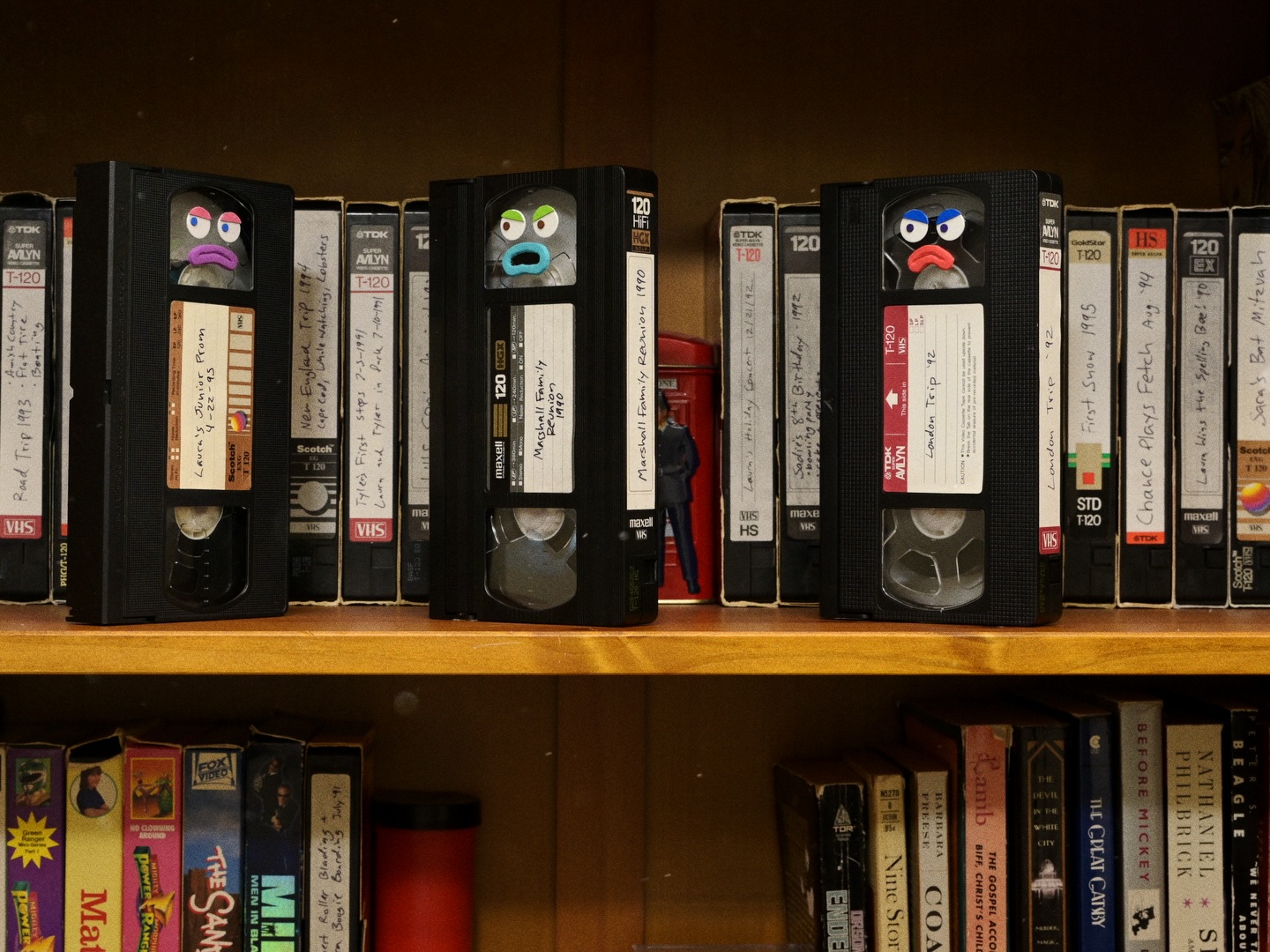VHX
dir. Alisa Stern

Memory is the subject of many films, but in Alisa Stern and Scott Ampleford’s VHX, it is the main character. This short film follows a day in the life of animated videotapes, or personified memories, as they express anxieties about “getting chosen” to be watched. The terrifying fate of being forgotten looms over these tapes, and when one of them is selected to be played and later comes back disfigured, the horror of impermanence threatens to become all-consuming.
In Anne Carson’s The Glass Essay, she writes, “I can feel that other day running underneath this one like an old videotape.” As time passes, we cannot help but feel its cyclical loop, pulling us back to the previous year, the previous fall, the previous time we were sitting in this exact same spot. Like a videotape, our memories play out as a series of images and feelings. As we recall memories, we are transported in time, our past and present conflated.
VHX challenges the reliability we attach to visual forms of documentation. Even if we meticulously archive our lives, can we really save all the past parts of ourselves from being lost? This deep and unsettling anxiety about time passing begins with the very first shot of the film, a series of fragmented video clips playing on a TV: a children’s birthday party, a band concert, a young boy bowling. Then the camera zooms in on a bookcase full of videotapes, and the abstraction of memory becomes concrete as one of the tapes coughs and asks, “would it kill her to dust every once in a while?”
How common it is, then, to conceive of memory as a movie or a videotape—something that can play and rewind. Throughout the film, these videotapes move, sleep, speak, eat, hide, and die. They have feelings, hopes, and dreams. And yet, this depiction is revealed to be unnatural, horrific, even.
In reality, memory inhabits our mind much more like the opening scene of VHX, fragments of people, time, and space that evade clear narratives and sequencing. Instead of a thing, memory is a force that changes, fades, distorts, and disappears. It is something so elusive that we seek to understand it through extended metaphors about videotapes. VHX is self-aware of this. The closing scene returns to the same TV from the beginning, on which a sea monster roars and a woman asks, “What is that?” The man responds, “That? That’s mankind’s hubris, finally catching up with us.”
It is, of course, our own hubris that compels us to extensively record, archive, and replay our life in the effort to “accurately” capture a present that is meant to be transient. Ultimately, the film poses questions about the dangers of preserving the past as some thing that is fixed in time. Rather, VHX posits that the past is very much alive, and it does not always come with the warmth of nostalgia. If we are not careful, the past can haunt, scare, and consume us, too.
Lexi Franciszkowicz is a teacher in Chicago.
